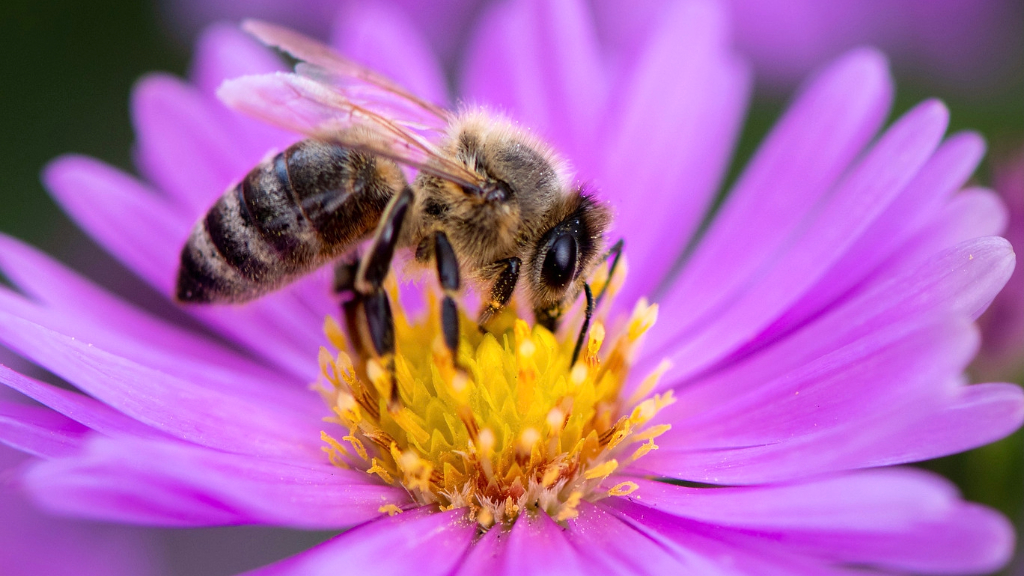Top 10 Plants for Honeybees


Honeybees play a vital role in pollinating plants around the world. In the United States alone, the survival of at least 150 food crops depend on pollination by honeybees, including fruits, vegetables, nuts and grains. Bees are also necessary for pollination of forage crops that support beef and dairy cattle and other livestock. While these beneficial insects are in peril and colonies have declined drastically over the last decade, gardeners play a critical role by creating a bee-friendly habitat that can help slow their decline. As an added bonus, most plants that attract honeybees also draw large numbers of hummingbirds and butterflies. The following low-maintenance, drought-tolerant plants are easy to grow in most climates, and are guaranteed to welcome honeybees to your garden. 1. Purple coneflower - Purple coneflower (Echinacea purpurea), a garden favorite with long stems and colorful, daisy-like blooms, attracts bees for a couple of months in late summer. 2. Anise hyssop - Bees are highly attracted to anise hyssop (Agastache foeniculum) during the warm days of midsummer. Although hyssop is an annual, it self-seeds every year. 3. Salvia - A member of the mint family, salvia (Salvia spp.) is a perennial that produces masses of tube-shaped flowers from spring through fall. Look for varieties in shades of blue, red, white and purple. 4. Borage - Available in white or blue, borage (Borage officinalis) is visited by a variety of honeybees and other valuable native bees. Borage blooms in spring and summer. 5. Bachelor's button - Bachelor's button/cornflower (Centaurea cyanus) is an old-fashioned, drought-tolerant plant with vibrant blue flowers. Honey produced from the pollen is pinkish-white. 6. Bee balm - Bee balm (Monarda) is appropriately named because it is a magnet for honeybees and other pollinators. Also known as bergamot, this North American native is a prolific bloomer available in colors that include bright red, pink, blue, purple and white. 7. Black-eyed Susan - Black-eyed Susan (Rudbeckia hirta) is an easy-to-grow, long-blooming perennial that produces bright golden-yellow, daisy-like blooms, each with a contrasting black, brown or green cone. 8. Butterfly weed - Butterfly weed (Asclepias tuberosa) and its cousin milkweed not only attracts monarch butterflies, but the showy clusters also play an important role in supporting bees and other beneficial insects. 9. Alyssum - Sweet alyssum (Lobularia maritima) is a small plant at 4 to 6 inches tall, but the masses of tiny, sweet-scented flowers are extremely bee-friendly. Look for sweet alyssum in a huge variety of colors, including purple, pink, lemon yellow, wine red and salmon. 10. Leonotis - Lion's tail (Leonotis leonurus) is a tall, shrubby plant with fuzzy, orange, tube-shaped blooms that appear from late spring through autumn. This plant is also known as lion's claw or lion's ear.
Gardening tips, videos, info and more delivered right to your inbox!
Sign up for the Gardening Know How newsletter today and receive a free copy of our e-book "How to Grow Delicious Tomatoes".

A Credentialed Garden Writer, Mary H. Dyer was with Gardening Know How in the very beginning, publishing articles as early as 2007.
-
 Looking For Plants To Give You The Soft And Fuzzies? Try These 5 Fuzzy Leaf Plant Options
Looking For Plants To Give You The Soft And Fuzzies? Try These 5 Fuzzy Leaf Plant OptionsLovers of texture, drama, silver foliage and tactile plants will adore these special sensory garden additions. These fuzzy leaf plant options will leave you all aglow
By Susan Albert
-
 Get Ready For A Summer Of Hummers! Grow These Full Sun Hummingbird Plants and Flowers
Get Ready For A Summer Of Hummers! Grow These Full Sun Hummingbird Plants and FlowersIf you’re lucky enough to enjoy a sunny backyard, make sure you are maxing out on your pollinator opportunities and grow these full sun hummingbird plants and flowers
By Tonya Barnett